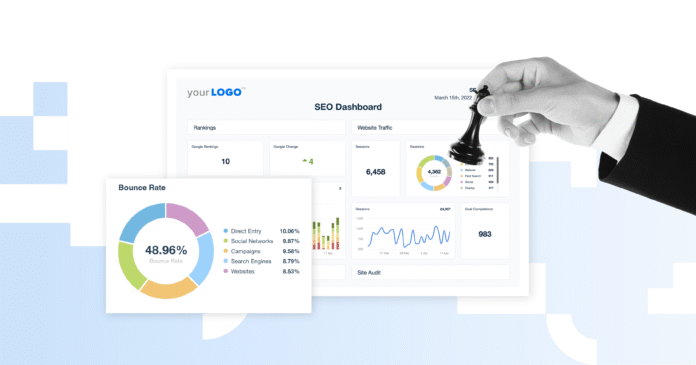The digital world never sleeps. Websites compete for attention, where every click matters and every second counts. However, many users leave without action.
Clicks are tempting, but they do not guarantee results. Conversions matter more. Sign-ups, purchases, donations, or subscriptions define success. SEO data reveals the path from curiosity to commitment. It transforms clicks into meaningful engagement and casual visitors into loyal users.
But here’s how a Melbourne SEO firm uses data to attain digital success. First things first—
Understanding SEO Data
SEO data is information collected from search engines and websites. It reveals patterns of behaviour and shows how users discover content. It highlights which pages engage and which repel. Metrics like click-through rate, bounce rate, session duration, and page ranking tell a story. For instance, keywords reveal intent, landing pages reveal appeal, and backlinks reveal authority.
Ignoring SEO data is like navigating blind. Studying it provides direction.
Clicks Are Not Enough
Clicks indicate curiosity and signal initial interest. A visitor sees your link, searches for content, and clicks. That is only the first step. Many users leave immediately. Bounce rates climb. Engagement drops.
SEO data identifies weak points. For example, high CTR but low conversion means the content fails to satisfy. Users may struggle with navigation. Pages may lack clarity. Call-to-action buttons may be invisible.
Bounce Rate and Its Importance
Bounce rate measures visitors who leave without interacting. A high bounce rate signals frustration. But SEO data shows which pages fail to retain visitors. Poorly structured pages, slow load times, or irrelevant content often cause high bounce rates.
Reducing bounce rate increases engagement. It also improves search engine ranking. Every interaction counts. Optimising pages based on bounce rate transforms visits into conversions.
Landing Page Optimisation
Landing pages define first impressions. SEO data reveals which pages attract visitors and which convert. Pages with high traffic but low conversions need adjustment. Some ideas to consider:
- Headlines may fail to grab attention.
- Calls to action may be hidden.
- Content may overwhelm visitors.
A/B testing guided by SEO data improves performance. Small adjustments have a big impact. Each iteration brings visitors closer to conversion.
Internal Linking and Navigation
Navigation shapes user journeys.
SEO data reveals paths visitors take. It identifies drop-offs and dead ends. Internal linking guides visitors toward conversion points. Menus must be intuitive. Links must be contextual. Pages without inbound links underperform. Strategic linking increases engagement.
Visitors stay longer. Conversions increase. A clear path turns aimless clicks into purposeful actions.
Page Speed and Technical Performance
Speed is critical. Users abandon slow pages. SEO data identifies lagging pages. Tools like Google PageSpeed Insights reveal bottlenecks. Image compression, caching, and clean code enhance performance. Fast-loading pages improve user satisfaction. They also enhance search engine rankings. Technical SEO and user experience converge here.
A smooth, responsive site is essential for conversion.
Mobile Optimisation
SEO data separates mobile and desktop behaviour. Mobile users expect fast, responsive design. If not, slow mobile pages can frustrate visitors. Fast mobile pages, on the other hand, increase engagement.
Mobile optimisation improves conversions and boosts search rankings. That is why mobile-first design is no longer optional—It is essential.
A/B Testing and Experimentation
SEO data enables A/B testing that compares variations of headlines, buttons, and layouts. This data reveals what reduces bounce and increases conversions. Each experiment improves user experience. Iterative adjustments increase engagement. Conversions rise gradually.
A data-driven approach ensures efficiency and maximises results with minimal cost.
User Feedback
Metrics alone cannot tell the full story—Feedback complements SEO data. Surveys, comments, and heatmaps reveal human perception. Users highlight confusion invisible to raw numbers. Feedback explains why certain pages fail to convert. It guides redesign.
Combining data and feedback creates a seamless experience, so users feel understood. Only satisfied users convert more often.
Structured Data
Structured data enhances visibility. Schema markup helps search engines interpret content. Rich snippets display ratings, prices, and availability. Users see critical information at a glance. Informed users are more likely to take action.
Structured data improves both SEO and user experience. It bridges the gap between discovery and conversion.
Behaviour Flow Analysis
Behaviour flow tracks visitor journeys. SEO data maps paths from entry to exit. Drop-offs and loops become visible. Pages can be redesigned to guide visitors smoothly toward conversion points. Smooth navigation reduces frustration. Clear guidance increases engagement. Conversions become predictable.
This way, behaviour flow transforms random clicks into purposeful journeys.
Balancing Data with Creativity:
Data guides strategy, while creativity drives engagement. SEO metrics, designers, and writers—All these three interpret patterns creatively that help a website. The key points of it include:
- Empathy shapes messaging.
- Visuals guide attention.
- Delight inspires loyalty.
- Machines track clicks.
In the end, humans feel the impact. This resonance fuels conversions.
Continuous Improvement:
SEO is dynamic, as algorithms change and user expectations evolve. That is why experts suggest continuously improving the SEO and web design aspects. For that, SEO data provides constant feedback.
Conversion optimisation is ongoing. Primarily:
- Monitor metrics.
- Experiment.
- Adjust strategy.
Final Thoughts:
Clicks are only the beginning; conversions define success. SEO data illuminates the journey from curiosity to action. Every step transforms clicks into meaningful results. Businesses, nonprofits, and creators benefit alike.
So, SEO data is more than numbers. It is a roadmap that guides action. It unlocks the potential of every visitor. From clicks to conversions, data-driven strategies create impact.
If you want to know this better, seek the experts at Make My Website, a reliable Melbourne SEO firm. You will be able to leverage it better.

